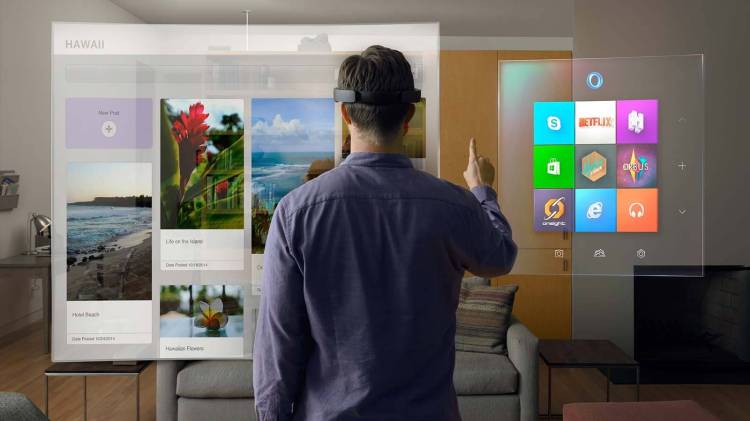Microsoft won’t skip virtual reality and jump directly to augmented reality. Instead, the company is combining these technologies into its Windows Holographic platform while also getting aggressive on pricing and capabilities.
Microsoft revealed a lineup of third-party VR headsets that start at $300 and run on the Holographic variation of Windows 10 today at an event in New York City. These headsets feature sensors that enable the device to track its position without external devices like a camera. This is also the first time that the company is showing off how the operating system it had previously shown for the HoloLens AR head-mounted display works with VR. For Microsoft, this is obviously an opportunity to ensure Windows continues to serve as the backbone of future computing platforms. Apple’s iOS and Google’s Android have already pushed Microsoft out of mobile, which has a gaming business that is worth $36.6 billion alone. With VR and AR, however, Microsoft is working to establish itself early.
Google is pushing into VR with the latest version of the Android OS, the Pixel phones, and the Daydream VR headset, but Microsoft is building a roadmap that can serve consumers a virtual Windows experience today and a mobile, AR Windows experience years from now.
HoloLens is the standalone AR device that is capable of putting Windows apps into the world around you, but that tech is still prohibitively expensive. Developers and consumers aren’t waiting for AR to figure out how human-computer interactions will work with the HoloLens. Instead, devices like the HTC Vive VR headset are enabling that experimentation right now, and Microsoft is jumping into that space.
Now, the Windows company can start building out an ecosystem and a design language for Holographic that will evolve naturally over time as VR tech advances and slowly morphs into AR.
To ensure that the world cannot ignore Microsoft’s move into VR, it is differentiating its strategy in three key ways. It is partnering with multiple brands to manufacture a range of headsets. It is starting the price at $300, which is half what the Oculus Rift sells for. And Microsoft has developed an inside-out tracking method that can do positional tracking without external cameras or sensors.
Pricing is crucial to encouraging adoption, but so is the new tracking tech. The biggest hurdles of the Rift and the Vive are that they require extra space for their sensors and they are potentially difficult to set up. By putting all of the positional tracking inside the headset, VR users have fewer steps and fewer cables to worry about.
This should keep the VR landscape interesting, and Microsoft’s further involvement suggests that the tech is here to stay as it joins Facebook, Google, and Valve in an effort to control this space.
VentureBeat's mission is to be a digital town square for technical decision-makers to gain knowledge about transformative enterprise technology and transact. Learn More

